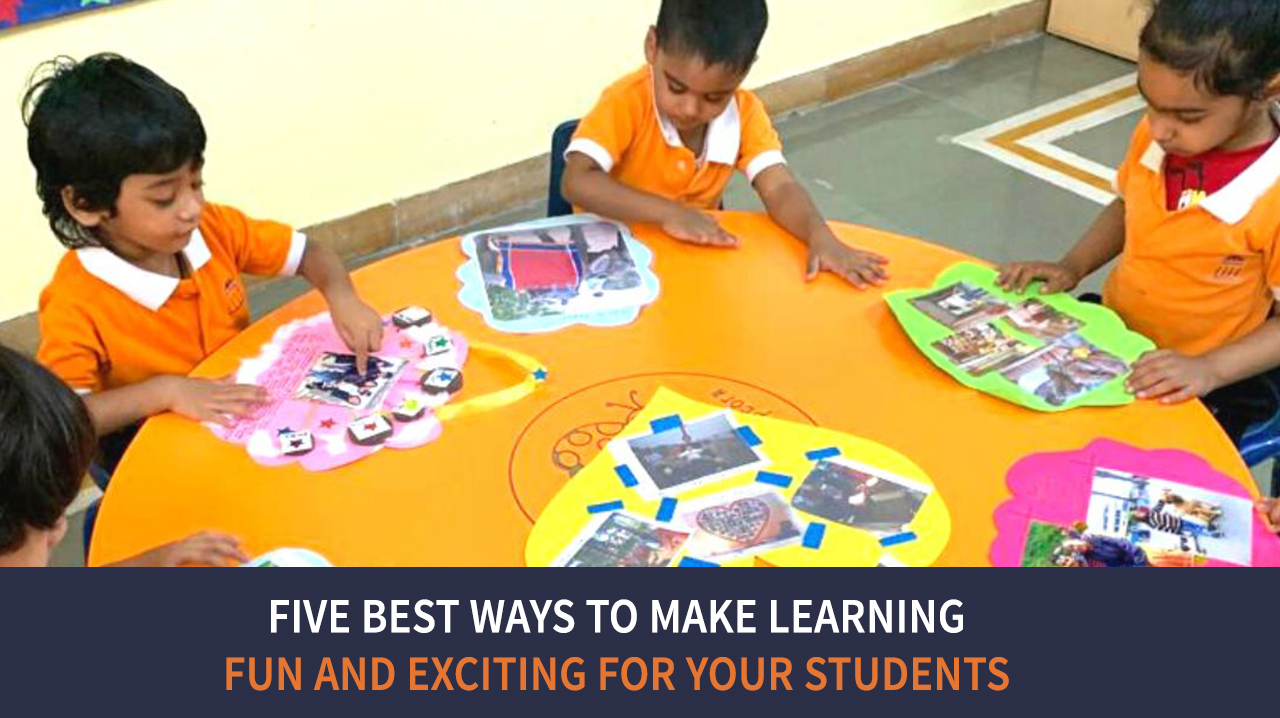Five Best Ways to Make Learning Fun and Exciting for your students

Learning is a lifelong process. Assimilating facts, analyzing them and using the learning in one’s educational and professional pursuits forms an important part of any person’s life. Learning should thus be effortless, positive, and fun. When associated with fun-filled activities, the learning is better, concepts are retained over a long period, and there is no anxiety or stress related to the education process. This holds even truer for young students aged 4 to 6 starting their primary years at schools or play centres. The teachers must organize activities to draw the child’s attention and interest. Here are a few ways to achieve fun learning activities for kindergarten.
1. Give the students choices and break up the lessons.
Fun learning starts with giving the young ones a sense of ownership and choice. The teachers can present a few alternate activities to the students and let them choose the one they want to do on a particular day. The student can then be divided into teams based on the chosen activity. Also, breaking up the activity or the lesson into periods of five to ten minutes at a time will help the students since children have a limited attention span. The instructional lessons can be interspersed with movement, poetry, dance, enacting what they have learnt, and choosing the mode they want to use to enact the learning.
2. Create fun group learning activities
Making students work together provides them avenues to communicate with each other, develop social skills, find solutions together and feel confident in the process. Keeping group activities time-bound and assigning a specific role to every student in the group also clears the roles and responsibilities for them. Making student team leaders also gives them a feeling of being acknowledged for their qualities and strengths.
3. Do hands-on learning
Also known as active learning can include activities like clay modelling, number games, arts and craft work, etc. Hands-on activities break the monotony of formal lessons and give the students a unique opportunity to do things that they can talk about at home. Fireless cooking activities, like making a sandwich or decorating muffins with sweet toppings and candy, are also great ways to engage in hands-on learning. Some of the best pre schools in Pune, of which MIT Gurukul is one, incorporate some hands-on activities in nursery and kindergarten.
4. Schedule field trips
Planning a visit to a museum, an animal farm, a park, historical places, a fair, or a circus are great ways to let children learn in ways that cannot be done within the confines of a class. These visits help children connect with their country’s heritage, enjoy rides, watch a clown performing acrobatics, or see why there is a need to keep farm animals healthy and safe just like humans. Such field trips encourage children to ask questions and develop general knowledge from a young age.
5. Utilize technology for lessons
International schools in Pune and other cities in India are increasingly incorporating technology to make lessons more interesting. Through YouTube shorts, young scholars can learn basic concepts such as hygiene, alphabet letters, numerical values, and shapes. Using tablets with only educational apps can also ensure that the students learn online while being kept safe and protected. Cartoons are also a powerful tool for teaching students, and these can also be accessed through technology.
In conclusion, incorporating fun activities and experiential learning methods boost children’s learning potential and create a positive attitude towards education. We invite the parents to discuss with the class teachers and the academic coordinators at MIT Gurukul the other techniques they can incorporate at home to make learning fun for their children.


